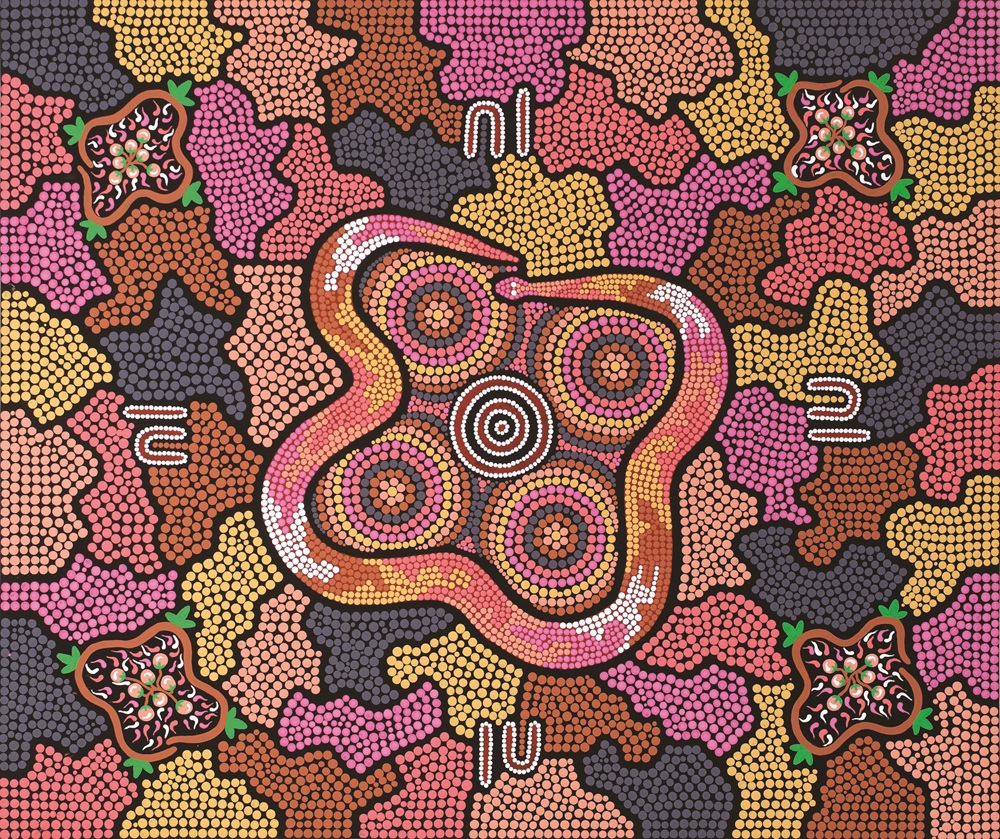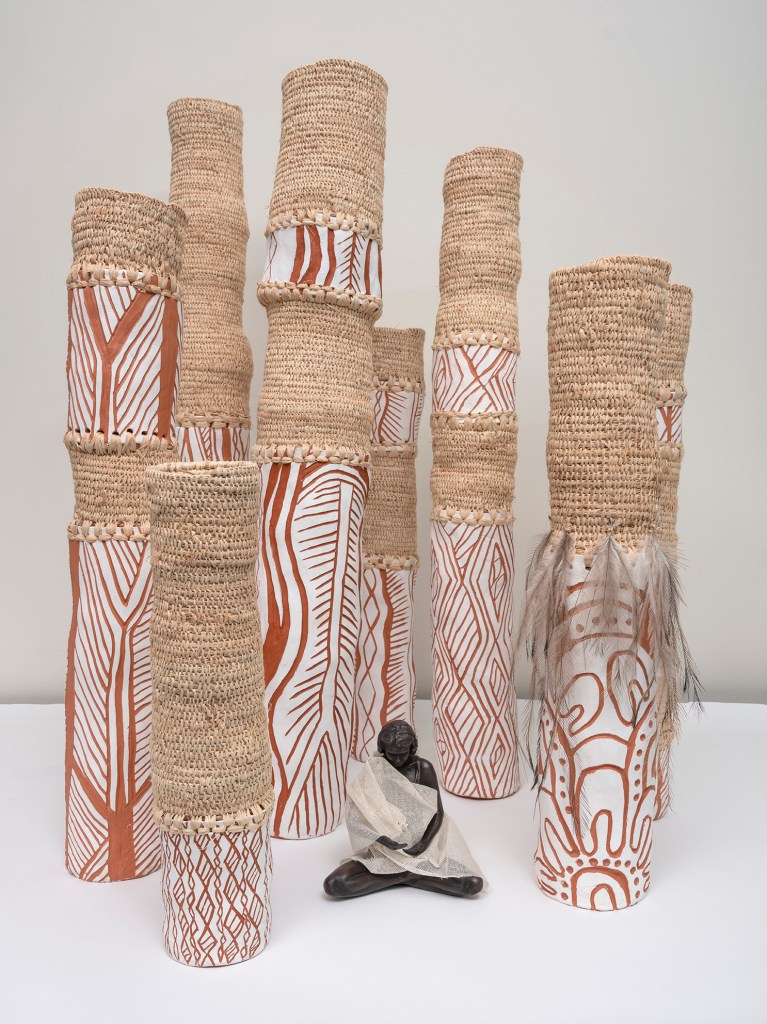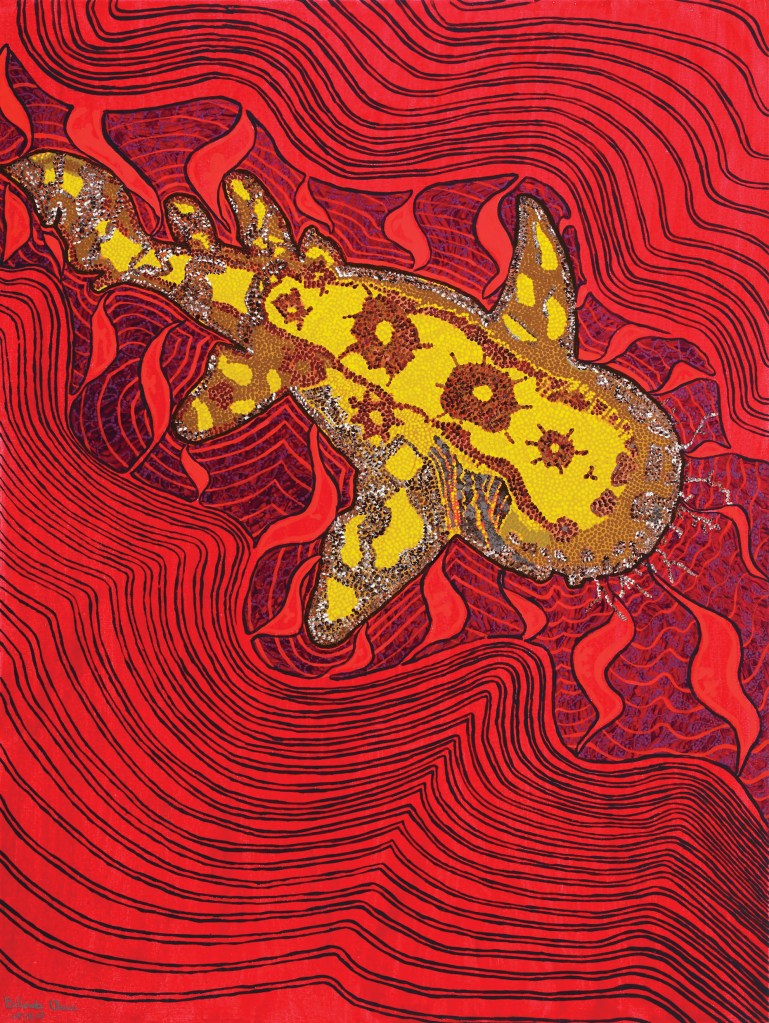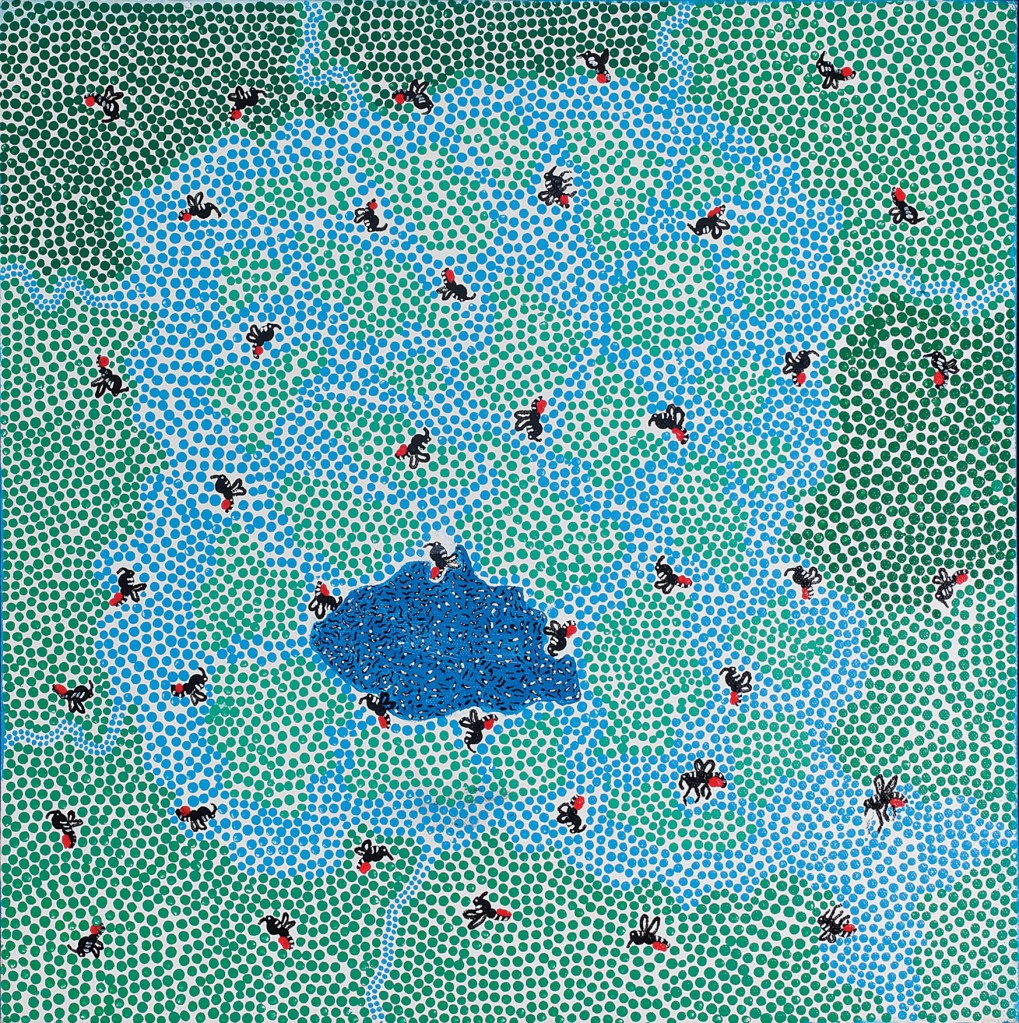The pearl fishers: QUAMPI casts a wide net over Quandamooka culture
The long-awaited arts and cultural centre QUAMPI has opened on North Stradbroke Island/Minjerribah, with the inaugural exhibition featuring a stunning array of Indigenous art.

The creation of QUAMPI, the Quandamooka arts and cultural centre now open on North Stradbroke Island/Minjerribah, was decades in the making.
QUAMPI director and Nunukul woman Avril Quaill says the centre, designed by leading Australian firm COX Architects, is a vital cultural landmark for the Quandamooka people, combining architectural innovation with deep cultural significance. The COX design included input from the Quandamooka Yoolooburrabee Aboriginal Corporation and QAGOMA.
“It started back in the 1990s with our elders wanting Minjerribah to have its own arts and cultural centre in Dunwich on North Straddie,” Quaill explains. “And, of course, those discussions were alongside our people’s push for native title. Which meant that the arts and cultural centre had to wait.
QUAMPI is the Jandai word for the pearl oyster that’s found around the Moreton Bay islands
“We were given positive determination of our native title in 2011. Then the focus returned to having our own arts and culture centre. It went through many community consultations, many design plans … to where it is now when community engaged COX Architects to work with our mob to input into the design of the building.”
The mid-September opening coincided with the Quandamooka Festival, with the combined event attracting more than 4000 visitors – double the previous attendance record for the festival.
You might like
QUAMPI is the Jandai word for the pearl oyster that’s found around the Moreton Bay islands and this motif is echoed across the design of the cultural centre.
“Those wishes are embedded into the design of QUAMPI, such as the rammed earth wall feature inside and outside the building, the placement of the actual QUAMPI pearl shells into one of the walls inside as a feature and the low environmental footprint that it has sitting on the edge of Deanbilla Bay,” Quaill says.
“And there are outside features. The architects added an elders space in the form of a woven basket motif that people can sit under. There are talking circles outside, weaving spaces under the beautiful cypress trees. And inside the building is a dedicated exhibition gallery. The whole building has been designed to what they call AAA (gallery) standards, which means that we can loan exhibitions from national and international collections.”


More than 40 Quandamooka artworks from Redland Art Gallery’s collection are on loan for QUAMPI’s first exhibition, Ngaliya Ngajau Wagari (Ours to Carry). Some works have never been publicly exhibited before. For example, a rare 1981 painting by renowned Minjerribah poet and activist Oodgeroo Noonuccal, and a collection of screen print textiles by Oodgeroo Noonuccal, Robert Perkins and Ivana Perkins that document Quandamooka stories and motifs.
Subscribe for updates


Quaill and Redland Art Gallery manager Kerryanne Farrer agree that this is just the start of a strong collaboration between the galleries to give greater exposure to Quandamooka arts and culture. Farrer says it is the largest loan they’ve ever facilitated, and it was a privilege to enable such rare and precious artworks to be exhibited on Country.
“We were there at the opening and were very honoured to be there because it is such a significant moment in Queensland’s cultural history in that it’s on Quandamooka country. A First Nations arts and cultural centre – they’re not something that comes along every day,” says Farrer.
“Our job as a regional gallery is to preserve the works, but they only really become reactivated or alive when they return to Country and community. For us to be able to do this really helps those works become part of a living culture, which we know First Nations culture and Quandamooka culture is – a living culture.
“We have a significant collection of works that are relevant to the area as well as nationally and internationally relevant. It was not only an exciting thing to do – it was the right thing to do – to really make this opportunity as rich and meaningful as we could.
“And with extraordinary contemporary emerging artists like Megan Cope, Kyra Mancktelow and Keiron Anderson – that possum cloak that he did with Carol McGregor is really extraordinary, as is Sonia Carmichael’s work, which is the most recent and the QUAMPI acquisition. We had shown that work only last year at Redland Art Gallery. To see it now as part of the collection at QUAMPI, that’s an amazing connection as well.”
QUAMPI is managed by QYAC and employs predominantly young Quandamooka islanders who will be taking part in career program training for the arts and cultural industry.
Quaill hopes people who might never have visited before will now take the opportunity to go to Minjerribah on the ferry and visit QUAMPI for a day trip during the upcoming Straddle Arts Trail, October 24-26.
“It’s a great way to slow down,” says Quaill. “You come to QUAMPI and see this wonderful exhibition. And the building is a work of art itself. We’ve got a small team there that will answer questions and help you out.
“We want people to come and celebrate and share this new era for the island, for the region.”
ngaliya ngajagu wagari (ours to carry) features artworks from the Redland Art Gallery collection, cultural and historical objects from the Quandamooka Yoolooburrabee Aboriginal Corporation’s heritage collection, as well as a new acquisition for the QUAMPI contemporary art collection. All contemporary artworks in this exhibition are by Quandamooka artists. The exhibition continues at QUAMPI until August 2026.

